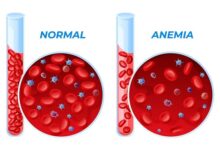Welcome to the easy world of English Linguistics.For any query and ambiguity about any concept regarding linguistics,click on the given links below and enhance your knowledge.It is a worthy opportunity for the students and learners who are eager to learn maximum.
Topics Junction
- Themes
- APK Apps
- History
- Language and Linguistics
- English Grammar
- Research Writing
- Literature
- Discourse
- Sociolinguistics
- Psycholinguistics & Neurolinguistics
- Applied Linguistics
- Economics
- Syntax
- Morphology
- Linguistic Terms
- Phonetics
- English Articles
- Dreams
- Phonology
- Semantics
- The Top Linguists
- Pragmatics
- Uncategorized
- Literary Devices
- English Linguistics Terms/Glossary
- Miscellaneous
- Linguistic Concepts
Trending
-
Integral approach of teaching/characteristics/activities/roles
Integral approach of teaching This method is characterized by focusing your attention on the content…
Read More » -

-

-

Popular
-
APK Apps

Nic Vpn Beta APK 6.0 download for Android Free Latest version
Nic Vpn Beta APK Nic Vpn Beta Apk your app by searching in the search…
Read More » -

-

-
